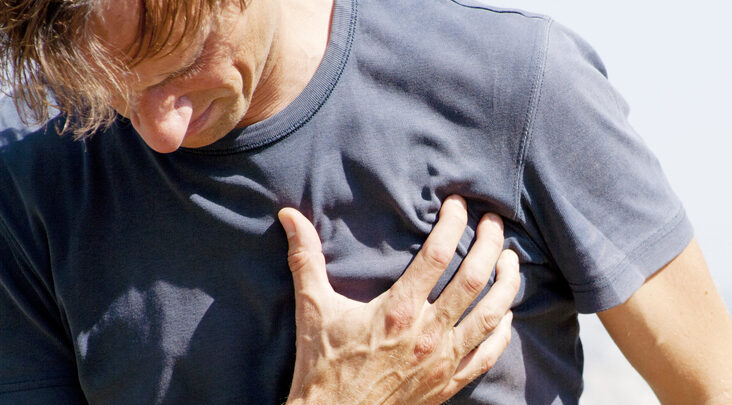What is myocardial infarction?

Early detection and healthcare as quickly as possible determine the patient’s evolution affected by myocardial infancy, which will depend on the amount of cardiac tissue that has been injured.
The infarction is due to injury to the myocardium (heart muscle) due to lack of blood supply. The term ‘infarction’ refers to the existence of an area of dead tissue due to the absence of oxygen.
Causes of myocardial infarction
A myocardial infarction usually occurs when a blood clot blocks the flow of a coronary artery. These arteries are part of the heart’s circulatory system and are responsible for nourishing it. When they get sick or injured, the disorder is called coronary heart disease.
Most often, the clot causing the problem has formed in a coronary artery narrowed by the accumulation of cholesterol and other fatty deposits, forming so-called atherosclerotic plaques. The covering of these plates can crack and expose the innermost part, causing the body to respond by forming a blood clot to plug the injury. If this thrombus blocks circulation for more than twenty minutes, a heart attack will occur.
For myocardial infarction to occur, this obstruction in the circulation must occur quickly and suddenly. On the contrary, if the artery is gradually blocked, a heart attack will not occur because the heart creates new blood vessels to nourish itself, and the problem would manifest as angina pectoris (where there is chest pain as well, but it does not occur an injury to the heart from lack of oxygen).
On other occasions, the infarction may be due to a spasm of a coronary artery, that is, to spontaneous closure of the vessel; and it could also be caused by the occlusion of an artery by a cardiac embolus (a blood clot that comes from inside the heart).
Risk factors for having a heart attack
Certain facts favor the origin of myocardial infarction. Among them, the following stand out:
- Smoking
- High blood pressure.
- High cholesterol levels.
- Atherosclerosis (formation of fatty plaques on the arteries walls, which reduce or obstruct blood flow).
- Age over 50 years.
- Diabetes
- The male sex.
- The SARS-CoV-2 coronavirus infection increases five times the chances of dying when suffering a myocardial infarction compared to patients who do not have COVID-19.
Symptoms of a heart attack
Some various signs and symptoms will indicate that we are suffering from a myocardial infarction. It is important to know what it feels like and when to identify this situation and go urgently to a medical center or request help.
Most frequent manifestations
The main manifestation of heart attack is chest pain, the characteristics of which are important to be known to detect it quickly and act early if it occurs.
The pain is often described as an oppressive and intense sensation located in the thorax (in the chest). Patients sometimes express it as a cuirass that squeezes their heart; other times, they describe it as a burning sensation or even impending death.
This pain does not always appear in the chest; other places where it can be located are: at the stomach level (frequently confused with indigestion ), in the arms, in the back, in the jaw, or the neck.
Many times this feeling is accompanied by weakness, sweating, nausea or vomiting, and anxiety.
Onset of pain
The picture’s onset can occur while the person remains at rest or even while sleeping, causing him to wake up. It could also appear, although it is less frequent, after performing an exercise when it is interrupted, the pain does not disappear (unlike angina pectoris ).
Atypical pictures
It is important to highlight that a part of the patients suffers the heart attack silently; that is, they do not present the condition described above. The diagnosis is established late when performing tests for any other reason. On other occasions, as occurs in the elderly and diabetics, the pain that appears does not present the typical characteristics, often delaying a heart attack diagnosis.
In some people, the first manifestation of a heart attack is the sensation of shortness of breath or suffocation, accompanied or not by chest pain. There is also a small group of patients whose only symptom is a sudden faint.
Examination of the patient
Physical examination is highly variable in myocardial infarction. While the pain is occurring, the patient is often pale, sweaty, and nervous, trying to alleviate his pain with frequent posture changes. The pulse of these patients tends to go faster than normal.
